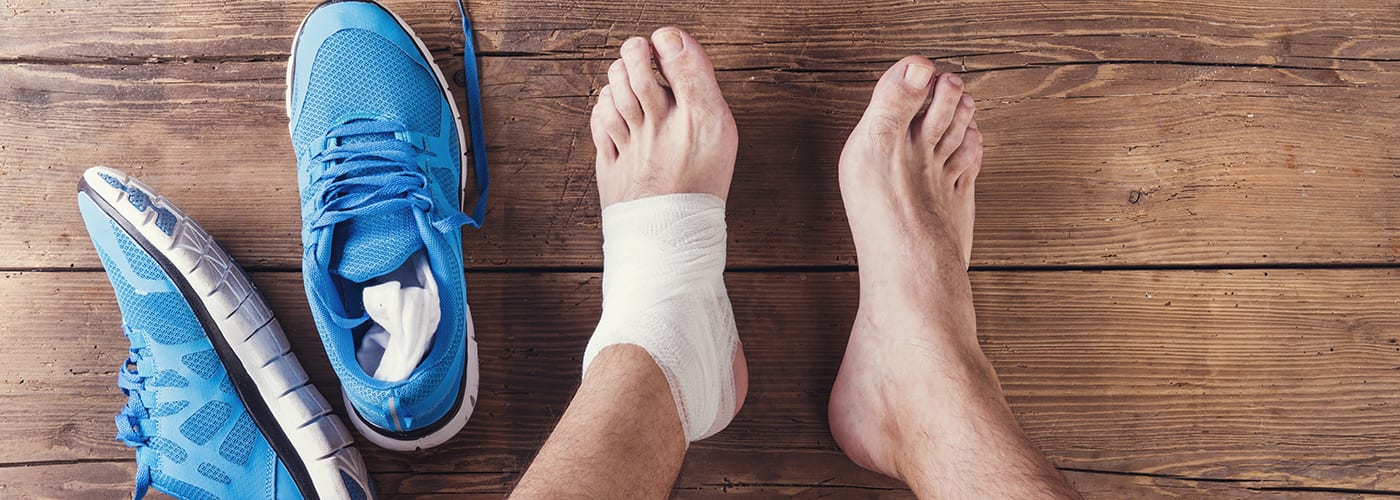Walking and running can be a great way to get active! Apart from being an incredibly accessible form of cardio, it’s a great way to get your lungs working, and your heart pumping, and get your whole body involved. While running and walking can be low-impact (and no contact) activities, they aren’t void of all injuries. At HiDow International, we’re committed to helping you relieve pain and get active sooner! Today, we’re taking a look at how you can avoid walking and running injuries.
Risk Factors for Injuries
There are a wide variety of injuries that can occur while walking or running. Many of these types of injuries have to do with your lower body and primarily your legs, groin, glutes, and every muscle and ligament in between. Common injuries of this sort include sprained ankles, shin splints, runner’s knee, IT Band Syndrome (ITBS), hamstring strains, and plantar fasciitis. Luckily, each and every one of these injuries has a solution and is easily preventable.
Walking and running injuries are most common as you get older. That being said, they can also come quite easily to those who do not stretch, wear the proper footwear, or go too hard based on their ability and physical condition. Those who don’t stretch properly or those who have a high BMI (not the best measurement but that’s for another day) are also more at risk to experience walking and running injuries.
So what can you do to avoid walking and running injuries? Well…
1. Run Shorter Distances
First, decrease how much you are running. You can avoid an injury by not pushing yourself to the point that you pull a muscle or hurt your knees. If you are just beginning try walking a mile, then two, then jog that distance and increase from there. Even if you are an experienced runner, if you begin to feel pain from running or walking, it’s okay to cut back on the distance that you cover. Remember that resting and allowing yourself to recover are important parts of any workout routine.
2. Don’t Just Walk and Run
If you begin to feel your joints hurting, and your muscles burning (from pain, not soreness), you should try other forms of cardio. Swimming, Cycling, and ellipticals are low-impact ways to get your cardio in without giving your joints a beating. The most common sports-related injuries are those that impact the joints and ligaments in your knees, so it is important to take switch up your cardio workouts as needed.
3. Apply Ice or Heat (Or Tens)
If you begin to feel pain from walking and running, you can give yourself ice, heat, and electrotherapy treatments in order to help you manage the pain. Generally, ice packs, peas, and ice baths are great for treating inflammation while heat is better for treating chronic pain. For an easy and convenient way to treat both, HiDow offers the most portable and easy-to-use TENS therapy units on the market. Perfect for helping you relieve pain in the short term and long term.

Related Stories
TENS Unit For Neck Pain – Best Methods
Neck pain can be a real headache – quite literally. From staring at screens all
Apr
5K to Marathon: A Universal Guide to Finding Your Running Groove
Let’s face it, running isn’t always smooth sailing. We’ve all seen those memes about the
Apr
How To Use A TENS Unit For Bursitis
Bursitis, a common condition causing inflammation of the bursae sacs in joints, can be a
Apr
Masters Week: Mythbusters—Can Tech Really Help Your Game?
Masters Week is here, and with it comes a lot of excitement, anticipation, and unfortunately,
Apr
Using A TENS Unit For Shoulder Pain
Do you find yourself constantly battling the discomfort of shoulder pain, unable to fully enjoy
Apr
National Garden Month: It’s Time for You to Bloom Too
National Garden Month is here! Time to ditch the winter blues and reconnect with the
Apr